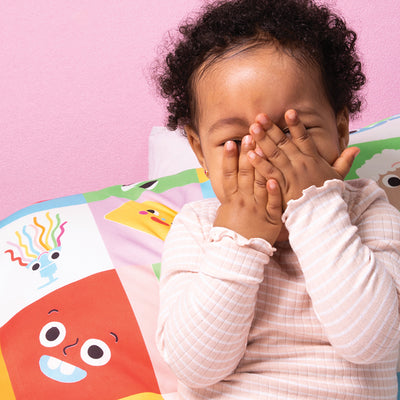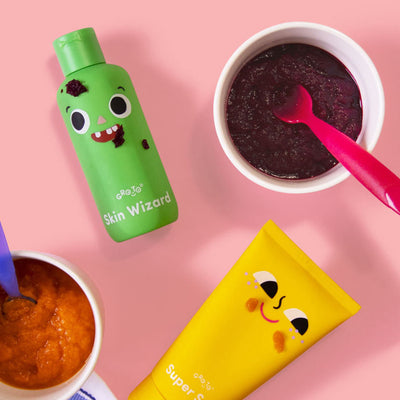
As your kids grow and change, so does bathtime! From those very first, adorable (only mildly stressful) dips in the tub, to the nightly nudie runs and bath battles, and transitioning your school-age rascal to the shower – try these tips to help you do it calmly, safely, and enjoyably…
Squishy, stinky little babies…
Tiny, squishable newborns don’t need to be bathed every day – around 2-3 times a week is enough to keep them clean and smelling delightful. But if your newborn really loves baths, or if it’s part of their relaxing wind-down routine, it’s okay to pop them in the tub once a day. You might choose an evening bathtime, if it helps to settle your little human and prep them for sleep, but the best time for a bath is any time when you are both feeling lovely and calm. (Preferably not when they’re hungry or straight after a feed.) Remember that because very new skin is very delicate, it can be more sensitive and prone to dryness, so try to keep baths relatively short (no more than 5-10 minutes) and steer clear of harsh soaps that’ll strip the skin of its natural oils and make it harder to keep moisture in.
Tub tips!
- Keep everything handy. Have a towel, washcloth, products, a clean nappy and change of clothes within reaching distance, so you don’t have to take your eyes off your little bather.
- Look for gentle, plant-based products that are free from soap and other surfactants to safely clean, protect and nourish squishy, cute skin, without messing up pH and hydration levels.
- Check the water temperature. A safe temp is between 37°C and 38°C (or about 36°C for a newborn), and you should be especially cautious if you’re showering with your baby.
Whiffy, mud-covered toddlers…
Between park rumbles, messy meals and texta that goes everywhere, toddlers can get incredibly grubby. So, a daily bath can be a useful (and calming) part of their night-time ritual. On particularly sweaty, dirty days, you’ll want to wash ‘em all over with a gentle soap-free cleanser – but on less active days, follow your instincts. You can get away with scrubbing only the stinky bits! If your kid’s skin is prone to dryness, it’s smart to stick to short, lukewarm baths. And, after a quick towel-down, slather a delightfully nourishing lotion all over to lock in moisture and keep their skin hydrated.
Tub tips!
- Little rough rascals can have sensitive skin, so use a gentle, soap-free cleanser or bubble bath. And if you're washing hair, do it at the end so your toddler isn’t sitting in suds for too long.
- If your kid loathes bathtime, try making it fun with bubbles and toys and games and their favourite tunes. Still having trouble getting their bum in the tub? It could be one of these culprits!
- Your once-tiny-now-trouble-making toddler has graduated from the sink to the big bath, with room to stand! It’s wise to line the tub with a non-stick mat, to avoid any surprise slip-n-slides.
Grubby school-age kids…
Now that your kid can be trusted not to pump an entire bottle of Sud Bud into the bath… (Maybe!) It’s a perfect time to encourage them to take ownership over their self care, and to start creating good skin care habits. Maybe it’s helping to prep the bath water, washing their face with a soft cloth, or applying their own moisturiser before they hop into their PJs. It’s also a time when you might start to transition your child’s nightly baths into a nightly shower. If they’re expressing interest in washing themselves, they're probably ready to try! Start by putting a shower mat down to avoid any slips or falls, and bring in a few fun showering treats – some old favourites (like their body wash and bath toy) and some new special things (like a grown-up shower cap, shampoo or wash cloth). Guide them through their first few showers – showing them where to wash and teaching them about the hot and cold taps. If you start to incorporate a shampoo and conditioner into their hair care, the water pressure of the shower can definitely help them get a better rinse.
Tub tips!
- Always start with supervised showers until you build up your child’s independence. You might jump in with them, or just sit close by in the bathroom to offer support, if they need it.
- If your kid doesn’t love the shower, don’t push it. Some kids are ready by age six or seven, but others will take a bit longer – they might be worried about products getting in their eyes and ears, or just be hyper-sensitive to the sensation of the water.
- Stick up a laminated showering guide with step-by-step instructions: Wet head! Scrub with shampoo! Rinse out shampoo! Sing your favourite song! (The acoustics are fantastic.)





Comments